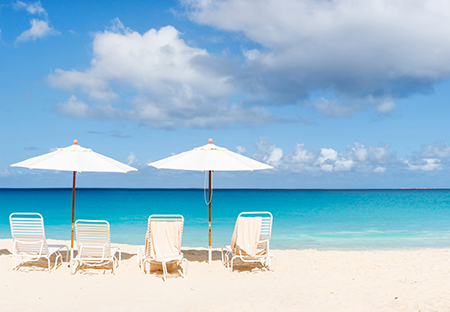Discover colourful Casablanca, Rabat, Fes, Chefchaouen and Marrakech
Immerse yourself in the exotic colours and cultures that define Morocco. From the imperial cities of Meknes and Rabat to the whitewashed town of Chefchaouen, the rich history and traditions of this ancient land await. Discover the medieval city of Fes, explore the spice markets of Marrakech and travel to the Roman ruins of Volubilis – this northbound tour lets you soak up the extravagant sights and revel in the hidden delights.
Inclusions
- 8 night guided adventure
- Accommodation: Guesthouse (1 night), Hotel (6 nights), Overnight sleeper train (1 night)
- 9 meals: 7 breakfasts, 1 lunch, 1 dinner
- Highlights: Casablanca, Rabat, Moulay Idriss, Volubilis, Fes, Chefchaouen, Tangier, Marrakesh
- Transported in Overnight sleeper train, Public Bus, Private vehicle, Taxi, Train
- Group Size: Min 1, Max 16
| Aug 15-Nov 30, 2025 | from $1299 tax included |
| Per person based on shared accommodation | |
| My own room (will have own room for most nights) | add $310 |
Round trip airfare to Casablanca and return from Marrakesh additional
Not Included: Tourist stay tax of $4 per day (paid locally)
Health
*When travelling outside Canada, you may be at risk for a number of vaccine preventable illnesses. You should consult a health care provider or visit a travel health clinic preferably six weeks before you travel. Due to limited supply of selected vaccines, consider visiting earlier. Some countries require proof of immunization in order to enter. It is prudent to assess your personal health status with a travel clinic or your family doctor before booking vacation, some immunizations have restrictions.
Day 1: Casablanca
Salaam Aleikum! Welcome to Morocco. Your adventure begins with a welcome meeting at 6 pm today. As there’s no free time included in Casablanca on this trip, we highly recommend you book an additional night or two of accommodation before the trips starts so you can explore. Modelled after Marseille in France, the city is famous for its art deco buildings and the modern-day masterpiece, the Hassan II Mosque. A pleasant way to spend the day exploring Casablanca is to wander the old medina and the city walls, then jump in a taxi to visit the Quartiers des Habous, the new medina. Finish the day with a walk along the Corniche, watching the locals play football on the beach.
Accommodation: Hotel (1 night)
Day 2: Rabat/Moulay Idriss (B/D)
Today take an early morning one-hour train to the historical town of Rabat. Rabat’s history is long and colourful, having been host to Roman settlements, pirates and more recently the Moroccan parliament. It contains numerous fine Arab monuments, some dating from the 10th to 15th century Almohad and Merenid dynasties, and others that are far older. The earliest known settlement is Sala, occupying an area now known as the Chellah. Store your luggage and spend a few hours strolling through the city’s old quarter on a self-guided walking tour, then walk up to Kasbah des Oudaias and enjoy views over the Atlantic Ocean. Continue on to Meknes by train (approximately 3 hours), before taking a 45-minute taxi through scenic countryside to the sacred pilgrimage village of Moulay Idriss. Once forbidden to non-Muslims, explore the delightful medina of this ancient town that offers an excellent insight into traditional Moroccan life. See where the faithful gather to pay homage at the tomb of Moulay Idriss I, who was the great-grandson of Mohammed and brought Islam to Morocco. At sunset, enjoy great views over the plains of Volubilis below. Your accommodation for the night is in a guesthouse/homestay with a local family. Bathroom facilities may be shared and you may be sharing a room with two or three others.
Accommodation: Homestay (1 night) – Your homestay accommodation for the night is in a guesthouse with a local family. Bathroom facilities may be shared, and you may be sharing a room with two or three others.
Day 3: Volubilis/Fes (B/D)
Today, take a guided tour of the archaeological site of Volubilis. World Heritage-listed Volubilis was one of the Roman empire’s most remote bases. The remains make an undeniably impressive sight as they come into view on the edge of a long, high plateau. When it was damaged by an earthquake in the 18th century, much of the marble was taken for construction in Meknes. Enjoy a tour of the ancient hilltop ruins with a local guide. Please remember to pack drinking water, hat, sunglasses and sun cream for this tour as it may get hot and you will be exposed to the sun. And, of course, don’t forget to take your camera as the town is filled with fantastic mosaics along the Decumanus Maximus, many of which remain intact. Afterwards, return to the nearby imperial city of Meknes, where you’ll have a few hours to explore. Sultan Moulay Ismail set out to build his own version of Versailles in the form of Meknes, constructing walls, gates and palaces with a labour force of over 25,000 slaves. The adventurous may want to try a camel burger for lunch at a local restaurant in the medina – don’t knock it ‘til you try it! In the afternoon, take a 1-hour train to Fes, where you’ll spend the next two nights. Fes is the most complete medieval city in the Arab world, and the most ancient of Morocco’s imperial cities.
Accommodation: Hotel (1 night)
Day 4: Fes (B)
Take a guided group walking tour of the old city, known locally as Fes el Bali. Step back into the Middle Ages in the labyrinth of the Medina, which is alive with craftsmen, markets, tanneries and mosques. Pass donkeys piled high with goods (this is one of the largest car-free urban zones in the world) and explore the specialty sections that divide the souk. Look out for the Medersa Bou Inania: one of the city’s most beautiful buildings, which has recently been restored and is now open to tourists. Visit Medresse el Attarine and the splendid Funduk Nejjarine: a beautifully restored 18th century inn. You’ll also see the famous tannery, known for the iconic view overlooking its dye pits, and a ceramics factory where you can see potters working in the traditional way. After the tour, the afternoon is free to get lost in the city’s maze of streets and alleys, take a photo outside the Royal Palace or visit the nearby hills for incredible views. You may also head to the Palais Jamai for a drink. Watching the sunset over the Medina while a dozen prayer calls vie for attention is an experience you’ll likely remember for a long time. In the evening, enjoy a delicious group dinner of Moroccan specialities like harira (chickpea soup) and chicken-stuffed pastilla with couscous. Accommodation: Hotel (1 night)
Day 5: Chefchaouen (B)
Take a local 4-hour bus to the isolated town of Chefchaouen today. Chefchaouen, or the Blue City, is known as one of the prettiest places in Morocco. Set against a wide valley and nestled between two peaks in the stunning Rif Mountains, Chefchaouen may take you by surprise. Its medina has been lovingly cared for with striking blue and whitewashed houses, red-tiled roofs and artistic doorways. Much of Chefchaouen was recreated by Andalusian refugees escaping the Reconquistia, so you might feel like you’re in the hills of Spain while exploring its streets. Ease into the relaxed pace of life in this rural retreat. Take a stroll through the ancient medina and shop for handicrafts, go hiking in the Rif mountains, or simply sit at a cafe and enjoy the pleasure of time passing by. If you’re feeling peckish, the goat’s cheese on offer is a popular treat enjoyed by many visitors.
Accommodation: Hotel (1 night)
Day 6: Chefchaouen (B)
Today is a free day to explore Chefchaouen. Perhaps take a guided tour of the sights, sounds, and smells of the medina, or sample the delicious local specialties at a cafe in the Plaza Uta el-Hammam. Admire the architecture of the 15th-century Grand Mosque (closed to non-Muslims) and browse the shops in the square selling woven goods and small sweets. Also, within the plaza is the walled fortress of the Kasbah. Wander through the tranquil gardens inside, check out the ethnographic museum and soak in wonderful views from the rooftop. Alternatively, you might prefer to get out of town and enjoy a hike and picnic in the surrounding hills. In the evening, how about tucking into a tagine at a local restaurant or visit a hammam a traditional Moroccan spa? The night is yours.
Accommodation: Hotel (1 night)
Day 7: Tangier (B)
Take a 3-hour private minibus journey to the coastal town of Tangier – a place of strategic importance to the Mediterranean as gateway to Africa. Once a hotspot for artists, secret agents and millionaires, Tangier has been going through something of a renaissance of late thanks to the arrival of a new monarch in Morocco in 1999. Mohammed VI of Morocco and his forward-thinking ideas about commerce and tourism has suddenly woke up the community to the potential of this city. Today, the city’s medina and kasbah are well worth exploring, as are the cafes and patisseries around the Place de la France in the Ville Nouvelle. Perhaps visit the American Legation Museum, the former palace of Dar el-Makhzen or the Caves of Hercules. The recently reconstructed beach promenade is lined with great restaurants. You could also enjoy a fresh seafood dinner by the port, watching the sun set over the Atlantic. Later tonight, you’ll board an overnight sleeper train bound for Marrakech.
Accommodation: Overnight sleeper train (1 night)
Day 8: Marrakech
Arrive early into Marrakech on your train, and then the day is free for you to explore. Marrakech is a feast for the senses. Explore the Medina and the city’s seemingly endless mosaic of souqs, each is devoted to a separate trade: pottery, woodwork, copper, leather, carpets and spices. Perhaps visit the well-known Koutoubia Mosque and its 12th-century minaret, which was the famous prototype for the Giralda tower in Seville. Or, you could take a wander through the tropical gardens of the French painter Jacques Majorelle (now owned by Yves Saint Laurent). You might like to check out the Palais Bahia, a superb example of Muslim architecture, or the ruins of the Palais Badi, reputedly one of the most beautiful palaces in the world in its time. The Saadian tombs are a recently uncovered gem of the Medina. All of the above can be a challenge to locate, but that’s all part of the experience of exploring the medinas of Morocco. In the evening, join the thronging crowds for an optional dinner in the Djemaa el Fna: the city’s main square. When night falls it transforms into a hive of activity. Henna-painters, performers and storytellers share the square with a street food bazaar, packed with stalls loaded with Moroccan delicacies.
Accommodation: Hotel (1 night)
Day 9: Marrakech (B)
With no activities planned, and check-out time usually around midday, you are free to leave at any time. Additional accommodation can be pre-booked if you wish to spend more time exploring in Marrakech (subject to availability).













